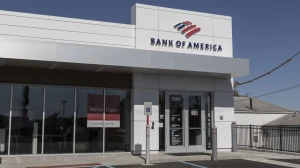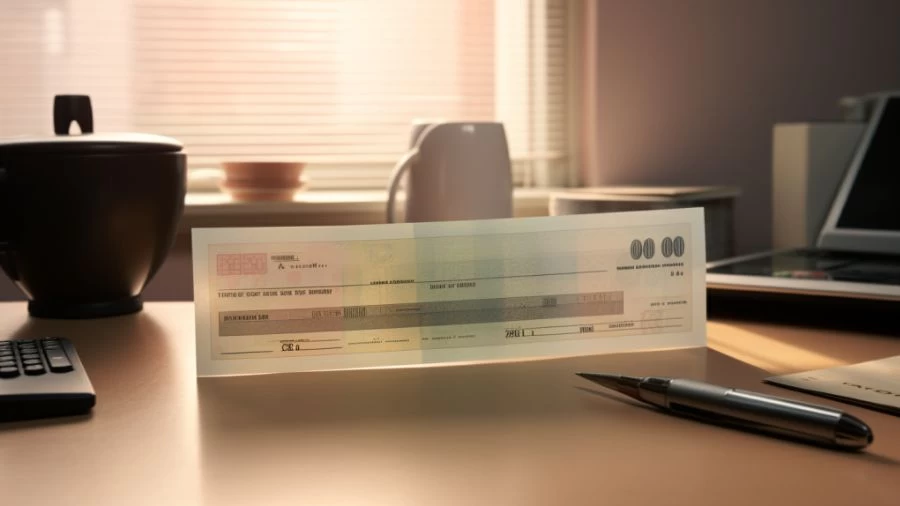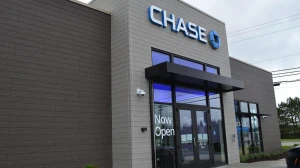
How to Deposit a Check: Step-By-Step Guide
To deposit a check, individuals can choose from multiple methods such as visiting a bank, using an ATM, or employing mobile deposit via a smartphone, and alternatively, they can opt for online deposit or even use the U.S. Postal Service.
by Sangamithra
Published Sep 08, 2023 | Updated Sep 08, 2023 | 📖 9 min read
On This Page
- How to Deposit a Check?
- How to Deposit Check at ATM?
- How to Cash a Check at an ATM?
- Where Can I Deposit a Check?
- How to Deposit a Check at the Bank?
- Bank of America ATM Check Deposit Limit
- How to Deposit Check at ATM Without Card?
- How to Deposit a Check Online?
- How Long Does It Take for a Check to Deposit?
How to Deposit a Check?
Depositing a check is a common financial task that many individuals need to perform from time to time. While digital payment methods have gained popularity, checks are still used, and knowing how to deposit one is essential. To deposit a check, individuals have various options, including using a smartphone, visiting a bank branch, or utilizing an ATM.
Ways to Deposit a Check:
At a bank: Endorse the check, fill out a deposit slip, and present it to the teller.
At an ATM: Insert your debit card, select the deposit account, enter the deposit amount, and insert the check.
With a smartphone: Use your bank's mobile app, endorse the check, take photos of it, and provide necessary information.
Online: Log in to your bank's website, endorse the check, scan both sides, choose the deposit account, and enter the amount.
U.S. Postal Service: Endorse the check, fill out a deposit slip, address it to the bank's processing center, and send it using certified or express mail.
How to Deposit Check at ATM?
To deposit a check at an ATM, follow these steps:
Locate an ATM: Find an ATM that accepts check deposits, preferably one from your own bank to avoid fees and delays. Some ATMs in convenience stores may only dispense cash, so check for a deposit slot.
Come prepared: Bring your bank debit card, memorized PIN, signed check, a filled-out bank envelope (if required), and a pen. Being organized will help streamline the process.
Follow instructions: Although ATMs may vary in their procedures, here's a general process:
- Insert your card and enter your PIN.
- Choose the "Deposit" option.
- Select the account for the deposit (usually savings or checking).
- Enter the amount of money you're depositing and insert your check. Some ATMs can read checks, eliminating the need to enter the amount manually.
- Confirm the displayed dollar amount.
- Answer any remaining questions, take your receipt, and ensure you have your bank card before leaving.
Accessing your money: Cash deposits might be available immediately, while checks may take two business days or sometimes sooner to clear. Be aware of your bank's cut-off times, as deposits made after these times may be processed on the next business day. Depositing at an ATM owned by another bank may also cause delays.
How to Cash a Check at an ATM?
To cash a check at an ATM, follow these steps:
Locate an ATM: Find an Automated Teller Machine (ATM) affiliated with your bank. Most banks offer this service to their account holders.
Insert Your Debit Card: Insert your bank-issued debit card into the ATM's card slot.
Enter Your PIN: Type in your Personal Identification Number (PIN) on the keypad and press "Enter."
Select "Deposit Check": On the ATM's menu, choose the option to deposit a check.
Insert the Check: Carefully insert the check into the designated slot. The ATM will guide you on how to do this.
Confirm the Amount: The ATM may ask you to confirm the check's amount. Make sure it matches the written amount on the check.
Verify the Deposit: Review the details on the screen to ensure they are correct.
Finish the Transaction: Once everything looks accurate, complete the transaction.
Collect Your Receipt: The ATM will provide you with a receipt. Keep it for your records.
Wait for Funds: Depending on your bank's policy, the funds may be available immediately, or you might have to wait up to three days for the check to clear.
Withdraw Cash (Optional): If you need cash from the check, you can withdraw the amount you require from the ATM.
Where Can I Deposit a Check?
If you're wondering where you can deposit a check, you have several convenient options to choose from. You can visit a local Bank or credit union to deposit the check in person, where you'll sign the check, fill out a deposit slip, and hand it to the teller. Alternatively, you can use your Smartphone to take advantage of mobile check deposit services offered by many banks.
By simply signing the check, taking photos of both sides using the bank's mobile app, entering the deposit amount, and hitting submit, you can securely deposit your check from anywhere. Another option is to go Online, provided you have access to a scanner. Logging in to your bank's website allows you to endorse the check, scan both sides, select the deposit account, input the amount, and submit it electronically.
Lastly, for those preferring to avoid in-person visits or online transactions, some banks accept checks by mail through the U.S. Postal Service. Sign the check, include a deposit slip, and send it to the bank's processing center via certified or express mail for added security. With these options at your disposal, depositing a check has never been more flexible or accessible.
How to Deposit a Check at the Bank?
To deposit a check at a bank, one can follow these simple steps:
Bring Valid Identification: When visiting a bank branch, it's essential to have valid identification, such as a driver's license or passport. The teller may request this to initiate the deposit.
Debit Card: Although not mandatory, having a debit card can expedite the process. The teller might ask for it to access your account quickly.
Deposit Slip: At the bank, locate the deposit slip. It typically contains fields for your name, account number, date, and deposit amount. If unsure, the bank teller can assist in completing this form.
Endorse the Check: Sign the back of the check.
Approach the Teller: Take the endorsed check and deposit slip to a bank teller.
Specify Deposit Amount: Confirm with the teller the amount you want to deposit and whether you'd like to receive any cashback from the check.
Receive Deposit Receipt: The teller will provide a deposit receipt as confirmation of the transaction.
Bank of America ATM Check Deposit Limit
The Bank of America ATM check deposit limit typically depends on the specific ATM's capacity for handling checks rather than a predetermined dollar amount. While there is no fixed maximum limit for check deposits at Bank of America ATMs, it's essential to consider the ATM's ability to process the number of bills and checks in a single transaction.
Additionally, the availability of funds from check deposits may vary, with some funds possibly subject to a hold period ranging from two to seven days, as determined by Bank of America's policies.
How to Deposit Check at ATM Without Card?
When an individual needs to deposit a check at an ATM without using a card, they can follow these steps:
- Locate an ATM that accepts check deposits and is affiliated with their bank's network, preferably in a well-lit and secure area.
- The individual should endorse the back of the check as they normally would.
- Insert the check into the designated ATM slot. In some cases, they may need to use a deposit envelope provided by the ATM.
- Following the on-screen instructions, the individual will typically be required to enter the check's dollar amount.
- Confirm the accuracy of the displayed information and proceed to finalize the deposit.
- It's important for the individual to retain the deposit receipt for their own records.
How to Deposit a Check Online?
Depositing a check online has become a convenient and efficient way for individuals to manage their finances. Online check deposits offer the advantage of adding funds to a bank account without the necessity of visiting a physical branch. The essential steps to depositing a check online include:
Logging in to the Bank's Website: The first step is for the user to log in to their respective bank or credit union's official website. A reliable internet connection is crucial for a seamless transaction.
Endorsing the Check: Before proceeding, it's necessary to endorse the check by signing the back. Some banks may also require users to add a note, such as "For Online Deposit Only," below their signature.
Scanning the Check: To deposit a check online, a scanner is required. The user should place the endorsed check in the scanner and scan both sides, ensuring that the scanned images are clear and legible.
Choosing the Deposit Account: Within the bank's website, users should navigate to the online deposit section and select the specific account where they wish to deposit the check, which could be either a checking or savings account.
Uploading the Check Images: The next step involves uploading the scanned images of both the front and back of the check onto the bank's online deposit platform. Care should be taken to align both sides correctly within the designated areas.
Entering the Check Amount: Users should input the precise amount written on the check into the online deposit form, verifying that the system accurately reads the account and routing numbers.
Submitting the Deposit: Once all the provided information has been reviewed and confirmed for accuracy, users can proceed to submit the online deposit request. The bank will then process the deposit.
How Long Does It Take for a Check to Deposit?
The time it takes for a check to deposit can vary depending on several factors. Generally, when an individual deposits a check into their bank account, it may take up to two business days for the check to fully clear. Typically, banks provide access to the first $225 within one business day, while the remaining amount of the deposit becomes available within two business days.
However, several variables can affect this timeline, such as the check's amount, the depositor's relationship with the bank, and whether the payer's account has sufficient funds. Additionally, checks from foreign banks or unusually large deposits might require longer hold times. Therefore, the specific policies of the financial institution and the individual's unique circumstances will determine how long it takes for a deposited check to become accessible.
How to Deposit a Check - FAQs
1. Can I deposit a check at an ATM without a debit card?
Yes, you can deposit a check at some ATMs without a debit card by following the ATM's on-screen instructions.
2. How long does it take for a deposited check to clear?
Typically, a deposited check may take up to two business days to fully clear, with partial funds available within one business day.
3. Can I deposit a check using my smartphone?
Yes, many banks offer mobile check deposit through their apps, allowing you to deposit a check using your smartphone's camera.
4. Is there a limit to the number of checks I can deposit at an ATM?
The check deposit limit at an ATM is often determined by the ATM's capacity to handle checks, not a specific dollar amount.
5. Do I need to endorse a check before depositing it?
Yes, it's important to endorse the back of the check with your signature before depositing it, and some banks may require additional notations, such as "For Mobile Deposit Only."




